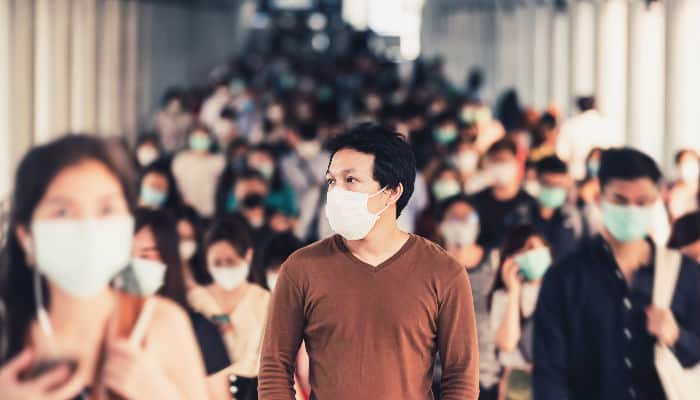Many of us were hoping that with each new phase introduced, we would inch one step closer to returning to our old lifestyle as per usual. However, after a year of dealing with coronavirus (Covid-19), we recognise that the concluding result was not the one we had in mind. It is safe to say that Covid-19 has left little to no aspect of life untouched, no matter our geography.
On a global scale, the pandemic has caused a digital divide amongst developed countries and developing countries. Families found in poorer communities have almost no access to education during this time and those who were reliant on school food programs to feed their children have another growing problem on their hands. It is a complex challenge; one that has definitely shone a light on the most vulnerable in our midst.
The United States of America, Australia, Germany and many other nations in the United Kingdom have undergone a second lockdown which have thrown people back into a whirlwind of emotions and uncertainty. With the novel virus making strides across continents and impacting millions of lives, health workers, policymakers, scientists and innovators around the world are rushing to conceive new methods to contain the further spread of the virus.
In their efforts to navigate through this crisis, many schools and workplaces have had to rethink their operations and standard procedures to reduce the threat of increasing covid-19 cases in their midst. Zoom has become the new classroom and office of today. With that, comes new opportunities and challenges which require time and practice to adequately adapt to. There is no clear roadmap moving forward, but with some vision and improvisation along the way, many are determined to combat the virus and downsize the levels of disruption and destruction surrounding it.
Here are some of the common practices that have been adopted by schools and businesses around the world which further reiterates how this epidemic has impacted the globe in a clandestine way.

School
One of the pivotal concerns in the education sphere is the competency of students to manage the rigours of the new school life, as they juggle the online school curriculum whilst familiarising themselves with the new technological platforms being introduced. The effectiveness and efficiency of remote learning is constantly being called into question. This catastrophic event has halted school curriculum in an estimated 188 countries, hindering the learning process of more than 1.7 billion students and their families. With limited options available, schools are weighing in on the consequences of returning back to school versus persisting ahead with home-based learning. The debate continues and many policymakers worldwide agree that a ‘trial and error’ approach is the best way forward.
Many institutions have adopted distance-learning practices to ensure education continues smoothly. Yet still, much of the current debate focuses on how much students have learnt during school shutdowns and how effective e-learning has been for them. Furthermore, taking socio-economic factors into consideration, it has been discussed that the long-term impacts of home learning, such as limited resources and the lack of practical application online, might negatively impact education in the long run.
Other potential barriers to optimum education online are passive attendance, little receptivity to lessons, lack of laptops and tablets, and a safe and conducive environment to learn. It is said that education remains a social process. The best learning happens when peers discuss, debate, exchange different points of view and collaborate on real-time projects. It is thus important that the technology used during this time enhances interaction rather than subtract it.
On a national scale, according to GovInsider, National University of Singapore (NUS), along with other local universities, have designed online lessons to simulate a classroom. Tommy Hor, Chief IT Officer of NUS shares that, “Lecturers have also leveraged advanced technologies like virtual reality and Artificial Intelligence to improve learning experiences in classes. This allows for the creation of “simulated scenarios that would otherwise have been difficult to replicate in classrooms”, says Hor. Furthermore, NUS uses data analytics to evaluate and improve distance learning across classes. With the collected data on the student performance, educators are able to analyse and tweak pedagogies to increase the cogency of home based learning. Singapore Management University (SMU) president Lily Kong, predicts that, “post-pandemic, most universities, including SMU, incorporate online learning into the current curriculum.
On a heart level, local universities are also offering help to certain segments of their student population, especially those who are struggling because they have lost their part-time work, or their parents have lost their jobs. It is equally important to offer financial support during this time, as education equally hinges on the financial situation of students as well.
In the same vein, let us now take a look at how covid-19 has largely impacted work, workers and the workplace.

Work
It is important to recognise that covid-19 is both a global health crisis and an international economic threat. This is further reprised in the spike in retrenchment and various businesses folding up during this time, seeing many filing for unemployment in 2020. It has posed financial and operational challenges in a plethora of organisations. Many owners are learning to pivot by expanding their existing range of offerings and opening new lines of service. We also see the shift in labor demand, from office staff to delivery staff, with “essential workers” taking on a new meaning and face.
The concept of working from home (WFH), has evolved to mean, working from anywhere. It has been a difficult transition to navigate, especially for employees who are cohabiting with roommates and need to consider others’ space and maintain boundaries as they try to implement work practices in the confines of home. Needless to say, WFH has definitely affected productivity, creativity and innovation in most businesses. Research further points out that, “traditional teamwork problems such as conflict and coordination can escalate quickly in virtual teams.”
Some barriers to working from home include motivation and authenticity at work. Other challenges witnessed are entire industries such as travel, hospitality, sports, and entertainment being shut down. On the brighter side of things, there has been a growth in short-term jobs taken up during this time. The flexibility and the temporal commitment it offers has led to the expansion of the so-called ‘gig economy’.
In Singapore, most companies have reverted to alternating between home and office every other week, as per the Ministry of Manpower guidelines. The local government has also obtained the President’s in-principle support to draw up to $17 billion to fund some of the measures to save jobs and the economy. Authorities have provided a variety of tax deferments and rebates to support businesses. Additionally, there are rental waivers, financing schemes for companies, and incentives for specific sectors such as the Aviation Industry, in which the government will provide a 75 percent wage offset for the first S$4,600 (US$3,205) in monthly wages through the Jobs Support Scheme. In the tourism industry, a provision of additional $90 million has been pumped into the industry’s funding.
Last but not least, in the food and beverages (F&B) sector, the government will provide a 50 percent wage offset for the first $4,600 in monthly wages.
In addition to the social and financial setbacks, acknowledging how the psychological challenges of living remotely, such as depression, anxiety, and loneliness, coupled with online challenges, such as potential cyberattacks with most things being taken online, has contributed to the slow upward climb seen today. By riding the waves of change, adopting smarter and safer practices to overcome the challenges of covid-19, we will empower many to not only survive, but thrive in the years to come.
References:
https://www.youtube.com/watch?v=u4ZoJKF_VuA&t=443s
https://govinsider.asia/smart-gov/tommy-hor-national-university-of-singapore-teaching-remotely
https://www.straitstimes.com/singapore/education/how-the-pandemic-will-change-universities
https://business.cornell.edu/hub/2020/09/25/covid-19s-impact-work-workers-workplace-future/
https://psycnet.apa.org/fulltext/2020-58612-001.html

